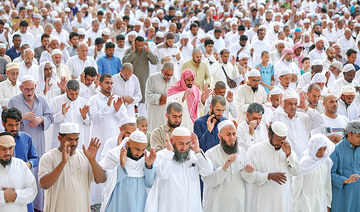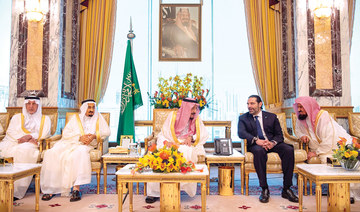MAKKAH: The squares surrounding the Holy Mosque of Makkah turned into a scene full of colors today, as pilgrims from across the world spent Eid Al-Fitr in one of the holiest cities in Islam.
Children can be seen wearing a mix of traditional Saudi clothing, with young boys trying to decipher how to put on the traditional ghutra (headdress).
Indian pilgrim Mohammed Raihan noted that Indian pilgrims were eager to wear traditional Eid garments — he was wearing elegant attire rich in colors, though his peers prefer the “Kurta Pajama,” the formal white Indian outfit of the Muslim-majority of the state of Kerala.
Yaqoob Mohamed Abdullah, from Niger, said that his traditional wear consisted of three embroidered pieces — pants, hat and shirt. He explained that African heritage is all about blatant colors as an expression of the importance of the event.
Indian pilgrim Mohammed Atif noted that this was his first Eid spent abroad, and he found it completely different in terms of the sense of brotherhood and love among this melting pot of peoples, traditions, cultures and nationalities.
Embroidery
Another Indian pilgrim, Rahman Akbar, added that Indians, he felt, were attached to their traditions despite their contact with many cultures and their migration to Europe and America.
Zakia Hajji from Nigeria said she made sure to wear her lively traditional wear, consisting of a green headband with shiny embroidery on it, and long and loose cloaks. Traditional wear, she told Arab News, is very important, as men and women alike understand the meaning and importance of celebrating Eid.
Fatima, from Malaysia, stated that many Muslim women wear long pants, skirts and head scarves, and that Malay women differ in tastes from the Indians who prefer to wear the sari and salwar, while men wear the “Kurta Pajama.”
The cities of Makkah and Madinah have a long history of receiving pilgrims, with many of their customs and traditions still lingering and kept for people to enjoy, a home away from home for religious travelers.
Indonesian, African, Indian, Afghan and Pakistani restaurants and specialty shops among others, can be found spread across the cities for pilgrims to visit and purchase items that remind them of home.














